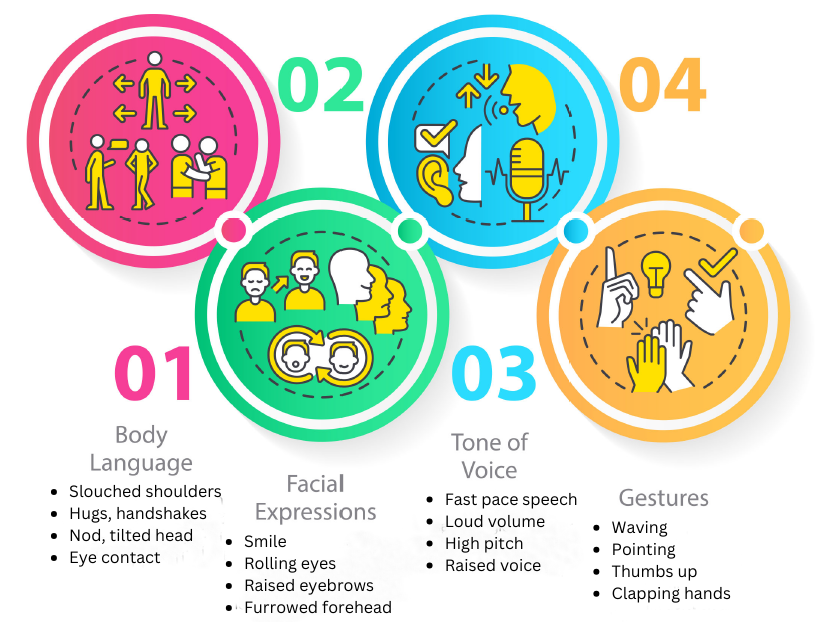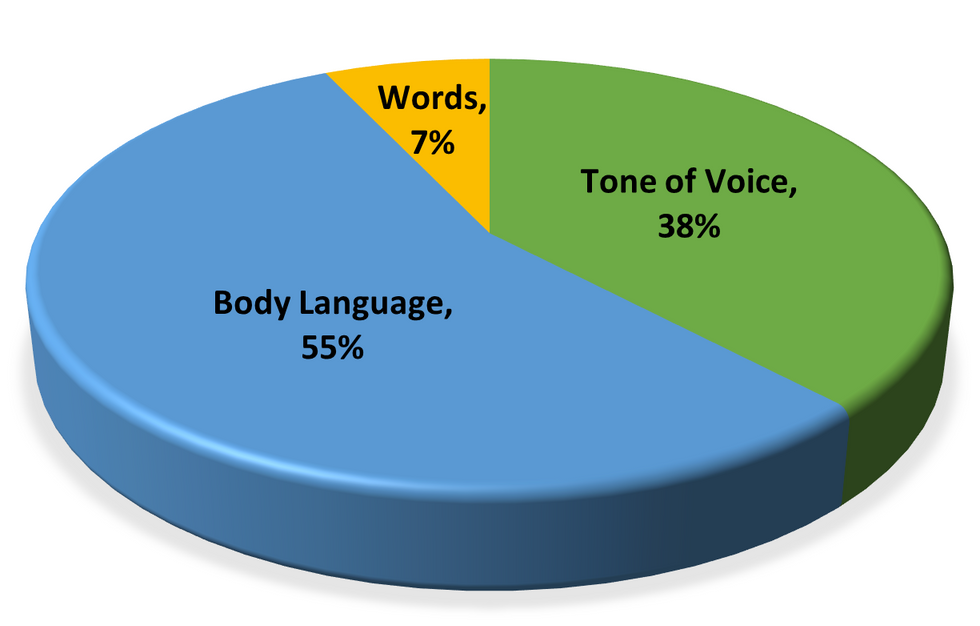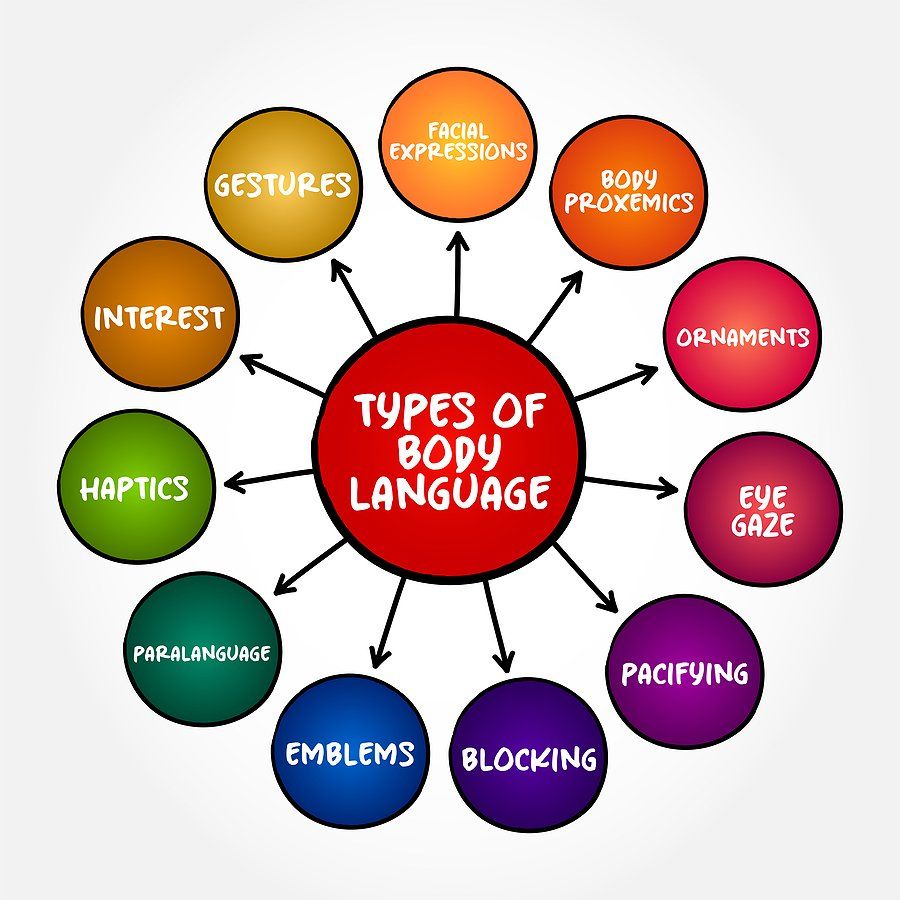
When we think of communication skills, most of us just think about written and verbal skills. For verbal communication, there is more than just talking and active listening. There is a third component—non-verbal communication skills. These are the ways you convey your message excluding words. What does that mean? Non-verbal communication includes things such as facial expressions, hand gestures, posture, and even how you’re dressed.
Non-verbal communication skills can provide clarity and depth to the message or allow one to better express a specific feeling (such as happiness, empathy, or concern). This is important and can help you make your message more compelling or persuasive, which in turn can make you more credible and trustworthy. This applies to “reading” your audience too.
If you’re a salesperson, understanding the body language of your client can help you tailor the conversation and approach toward your desired outcome. Or if you are talking with someone with a different culture, make sure you’re culturally sensitive. There may be non-verbal cues such as handshakes, bowing, or eye contact that may be inappropriate and possibly disrespectful. You don’t want to inadvertently make a social blunder or faux pas.
How Important Are Your Non-Verbal Communication Skills?

Graphic created by Debra Shannon
And how important are non-verbal communication skills? Did you know that non-verbal communication accounts for ~93% of a conversation? Yes, that means only ~7% of the communication is the actual words.
How effective is your ~93% of the conversation? Do you feel that people frequently misinterpret or misunderstand you, or seem confused? Or do they struggle to relate to your non-verbal cues? And if your conversation is virtual (such as a large Zoom meeting) then you’ll need to pay extra attention to the non-verbal cues. For example, are some people constantly looking away, having their arms crossed, or fidgeting in their seats?
Improving Your Non-Verbal Communication Skills

Image from Bigstock
If you have a big presentation or job interview coming up, you want to ensure you convey confidence and professionalism. After all, Will Rogers said, “You never get a second chance to make a first impression.”
Improving your non-verbal communication skills can enhance your ability to convey messages effectively. It starts with self-awareness, and intentionally doing things such as the following:
- Display appropriate facial expressions – Use your face to express happiness, empathy, or concern.
- Tone and pitch of your voice – Be aware of the cadence of your speech and have a steady tone but not monotone.
- Practice active listening – You can show that you are engaged and listening by nodding and maintaining eye contact.
- Record yourself speaking – Practice and make recordings to see and hear yourself. The more you practice, the more comfortable you will become.
- Be aware of cultural differences – Adjust your non-verbal gestures to be culturally sensitive when communicating with someone with a different culture. For example, the "OK" gesture (made by forming a circle with the thumb and forefinger) is widely recognized as positive in many Western cultures but may have an offensive connotation in other cultures.
Having strong non-verbal communication skills is important in both your personal and work life. Whether you are interviewing for a role, meeting with a new client, or collaborating with Marketing on a new service, it’s critical to be able to express and exchange information. Remember that non-verbal communication accounts for ~93% of a conversation.
For more information on the importance of strong non-verbal communication skills, follow me on LinkedIn!
- How To Win Friends In The Workplace (Through Communication) ›
- How To Ensure Effective Verbal Communication ›
- Interview Tips: Master Your Nonverbal Communication ›

 Bigstock
Bigstock Bigstock
Bigstock Bigstock
Bigstock


